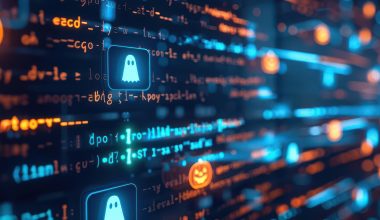The topics of cybersecurity and data protection continue to dominate the workplace and news. Organizations must routinely strategize to prepare for disasters and cyberattacks.
Is having a secure network and backing up your data enough precaution for your organization?
We’ll answer that question and more as we explore what business continuity solutions are, how they mitigate disasters, and explain why your organization should consider them.
Nature of Disasters
When we talk about disaster, the first thing that comes to mind are natural disasters such as floods, hurricanes, or fires. Your organization’s geographical location increases the chances that a natural disaster might threaten your day-to-day operations. However, the risk involving nature that poses the highest threat to your security is that of human nature.
People are the biggest threat to your cybersecurity efforts and are the most common cause of system downtime. This is especially apparent through ransomware. In a recent data breach report from Verizon, it was noted that 60% of all system downtime could be attributed to ransomware. Ransomware usually gains a foothold through user activities such as opening a link or attachment from a malicious email.
We can all place ourselves in a scenario where we have accidentally deleted a file, clicked on a link in an email that we were unsure of, or opened an email attachment that seemed important without verifying the sender. Any of these events can lead to a breach or disaster.
How do you defend your organization from these complex problems that stem from such simple errors?
Continuity is Key
With employees being both an organization’s biggest asset and threat, a solution needs to be in place to remedy the latter. That solution is business continuity.
Continuity is much more than a backup, but before we unpack what continuity is, let’s talk about what it is not.
Continuity is NOT a cloud, local, or file-based backup. Those backups are great options, but they are not the most optimal solution available when it comes to data recovery for your business operations. Most of these options will result in data loss and extended recovery time when faced with a disaster. This is where continuity shines as it is much more than an insurance policy or copy of your data. Business continuity is a solution that ensures your operations continue while you recover from a disaster, hardware failure, or cyberattack.
A true business continuity solution is an imaged-based hybrid-cloud backup. Datto, Inc. is a technology company specializing in business continuity disaster recovery that utilizes this type of cloud back-up. Edmunds GovTech provides continuity solutions through Datto which allows for a variety of benefits over standard back-ups. With these solutions, ransomware detection and backup verification alerts are monitored by our IT Team to ensure healthy backups are readily available. The image-based backup captures a snapshot of your entire server including the operating system, applications, firmware, and data files. Using image-based backups can reduce recovery time from weeks to days or hours to minutes.
Edmunds GovTech offers organizations 3 restore options with our hybrid-cloud feature that is included in our business continuity services. The first option is local, and the other two being cloud options. Option one provides the ability to recover from a local device or appliance that contains an image copy of your data. If you experience a server hardware failure, a copy of your data on the local appliance can run as a virtual environment that will power your entire network until the issue is corrected. Option two is used when the local appliance is non-operational. If this is the case, a copy of your data located in the cloud is then utilized. This data is powered by a secure facility in Pennsylvania. Through a launch pad, our IT team selects a copy of your data from the facility and creates a virtual environment to allow your operations to continue. If something occurred that compromised both the local appliance and the cloud location in Pennsylvania, your data is also accessible from another cloud that is powered by a secure facility in Utah.
As a side note, while using any of the virtualized restore options described above, backups will even continue to generate from the virtualized environment to prevent any additional data loss as recovery tasks take place. When your data is virtualized, whether it be locally or on a private cloud, you can be confident your operations will be safeguarded until you can get back to running in a traditional manner.
We hope this discussion has helped you to rethink your backup processes and to consider a business continuity solution. It is important to weigh all your options when it comes to data protection and recovery.
If you are interested in learning about how our Managed IT Services can assist you with business continuity solutions for your local government, contact us to schedule your free cyber assessment.


